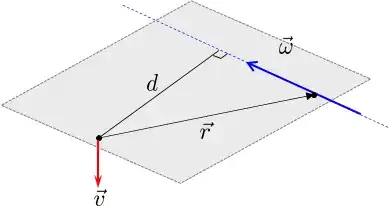The circumference of a circle is: $C = 2\pi r $
If the number of revolutions you traveled is n, then the length traveled is:
$L = 2\pi r n$
If you differentiate with respect to time to get velocity, you get:
$v = \frac{dL}{dt}= 2\pi r \times \frac{dn}{dt}$
$\frac{dn}{dt}$ is revolutions per second and $2\pi$ is the radians around a full circle.
This is simple enough you can completely skip the differentiation and do it intuitively. It should be obvious why:
$velocity = circumference \times revolutions.per.second = 2\pi r \times revolutions.per.second$
Continuing on, then $2\pi\frac{dn}{dt}$ (or $2\pi \times revolutions.per.second$ if you prefer) is radians per second $\omega$.
Therefore, $v = 2\pi r \times \frac{dn}{dt} =(2\pi\frac{dn}{dt}) \times r= \omega r$
As pointed out by others, a radian is not a unit. Radians is just a proportional (dimensionless) measure of the arc length around a circle relative to the circumference of ANY circle, of ANY size. Put another way, it is a proportional measure of how far you've gone around an entire circle anglewise or distance wise; same thing.
Start with the circumference of a circle $C = 2\pi r $
Let's say we need to make up a unit; a unit that represents some arc length around the circumference of a circle. It would be awfully convenient if it would be independent of the size of the circle so we should pick something that scales with the circle rather than a fixed number.
There's not many things to pick from: radius, diameter, circumference. Circumference makes no sense since we want a ratio proportional to the circumference which leaves either radius or diameter. Mathematicians in the past picked radius, but they could just have easily as chosen diameter.
So, let's find the ratio of the radius to the circumference of a circle:
$\frac{r}{C} = \frac{r}{2\pi r} = \frac{1}{2\pi}$
That 1 in the numerator is the one radian, and $2 \pi$ in the denominator is the what it takes to get around the circumference. So really, a single radian represents one radius of arc length if you define $2 \pi$ as the circumference. Why do we define things this way? It helps keep the math clean.
There is something similar that exists for a sphere as well, the Stearadian. A single Stearadian is the area $r^2$, $r$ being the radius of the sphere, and $4\pi$ is the entire surface area of the sphere (coming from how $4\pi r^2$ is the surface area of a sphere). It is derived exactly the same way as I just did for a radian, except arc length is replaced by area and circumference is replaced by surface area. Everything moves up one dimension.
I only learned what a radian really was until I had to learn Stearadians and realized that none of it made sense because I did not understand what a radian was.

